Das Olympische Bildungsmagazin
Pierre-Edouard Sottas sagt …
- Jens Weinreich
- 29. September 2010
- 19:45
- 26 Kommentare
Nur damit es nicht untergeht. Der Schweizer Blutdoping-Experte Pierre-Edouard Sottas, der auch hier im Blog oft erwähnt wird, hat sich in die Diskussion eingeschaltet. Er kommentiert im Beitrag „Das Bundesgericht sagt im Fall Pechstein …“, wo alle Basis-Dokumente und zuletzt auch die Beiträge von Grit Hartmann zum Abschied von der Kugelzell-Anomalie verlinkt sind:
Dear All,
I have seen that I have been cited multiple times in this interesting thread (29 times actually). I would like to clarify several points:
- it is not possible to analyse the blood data of Mrs Pechstein with the model I developed, simply because the collection, transport and analysis of the blood samples did not follow the corresponding WADA protocols.
- Mr Faber was wrong on many points on how we use biomarkers of doping today. However he is right on a crucial issue: on the logic that must be used to evaluate the evidence provided by biomarkers of doping. Today it is unfortunate that many lawyers do not know that logical rules must be followed in the evaluation of forensic evidence. This issue is not peculiar to anti-doping but to all forensic sciences in general. The most common fallacies are the so-called “fallacy of the transposed conditional�? in case of multiple hypotheses (eg medical condition vs doping) and the “false positive fallacy�? that may result from multiple testing in anti-doping for example.
- the science at the roots of the biological passport is solid. By definition, a biomarker of doping provides evidence of doping. How strong is the evidence is a case by case scenario. In that respect, biomarkers of doping are not different to any other sources of evidence: the same is true with DNA evidence, fingerprints, fibres, glass fragments, etc…
- in contrary to what is often suggested and reported again in this thread, Ms Pechstein was not the first athlete convicted solely on the basis of biomarkers of doping. The use of biomarkers of doping has a long history in sports.
Sincerely,
Pierre-Edouard Sottas
Es tauchte ja dutzende Male die Frage auf, was Sottas von diesem und jenem halte und gesagt habe … Fragt ihn doch selbst. Ich schlage vor, hier in diesem Thread sollte weiter diskutiert werden.
What they say
"I give a shit on you!
I shit on German media!"

Husain Al-Musallam
President World Aquaticsand Co-Conspirator #3
coming soon
fund journalism
FIFA Watch
best of



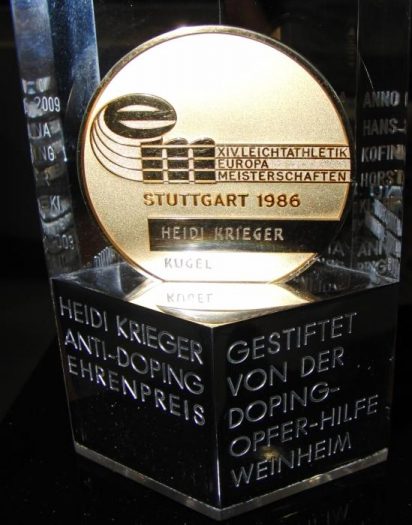

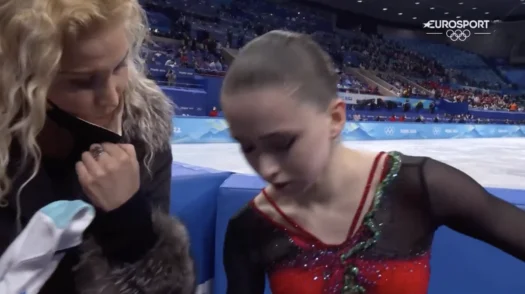
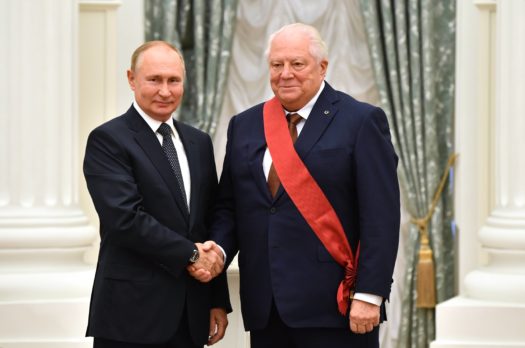
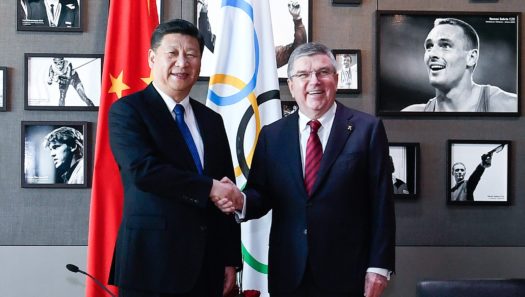
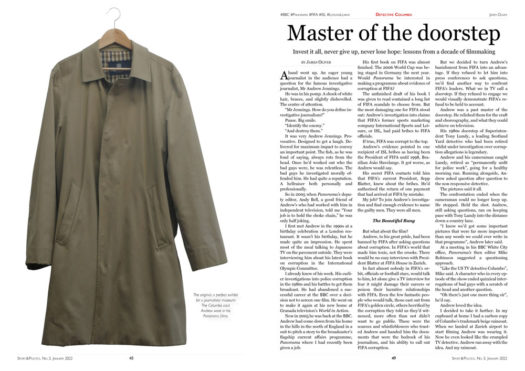
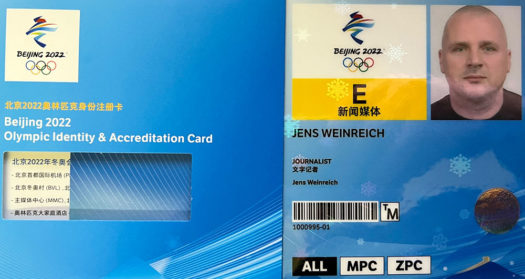
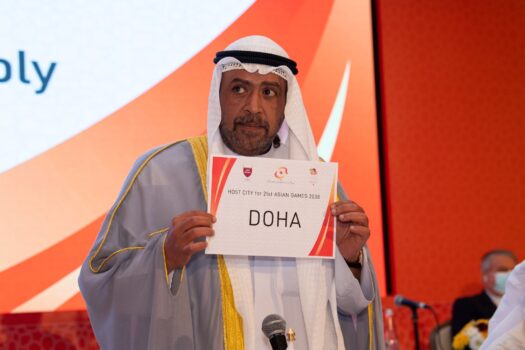
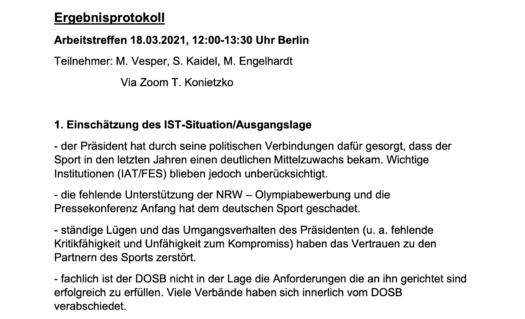
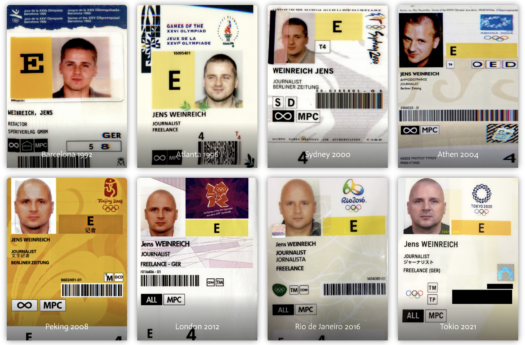

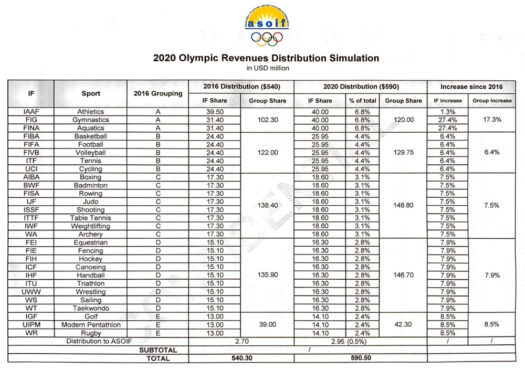
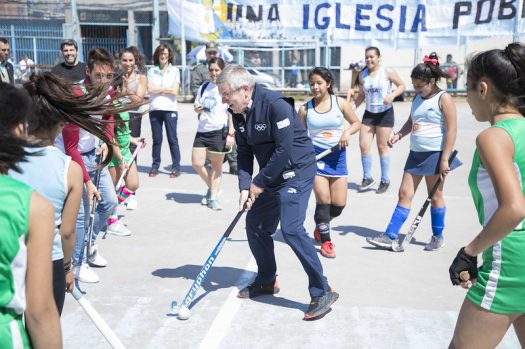
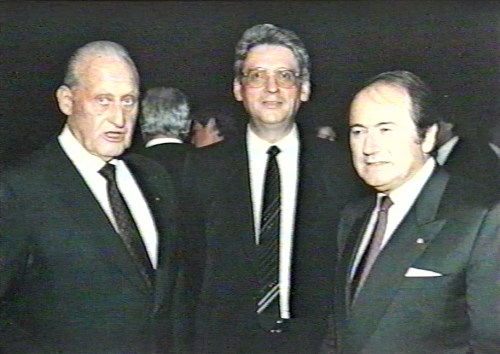
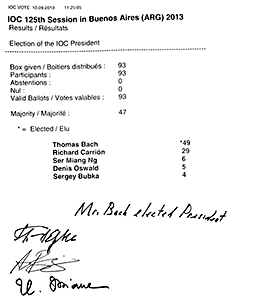

Aus dem alten Thread:
Na, dann sollte ja ein Fachmann, der bisher nicht dadurch aufgefallen ist, parteiisch zu sein, (bzw. eigentlich noch gar nicht aufgefallen ist) nicht als „Anfeinder“ diffamiert werden.
Es gibt durchaus Leute, die Frau Pechstein die Anomalie nicht abnehmen, das sind aber nicht die, die am lautesten brüllen; bitte nicht vergessen, dass sie wegen Dopings verurteilt ist und momentan die Chancen, dass das aufgehoben wird, schlecht stehen. Dr. Frank erklärt die Werte ja mit einer Epo-Eisen-Behandlung.
Dr. Frank unterstelle ich fachliches Interesse und Neutralität. Er möchte fachlich richige Darstellungen und nennt eine zumindest mir neue Möglichkeit für die Manipulierung bestimmter Werte. Er wird aber meiner Auffassung nach instrumentalisiert.
Sagt er wirklich, daß CP keine wie auch immer geartete Anomalie hat? Ich hatte das anders aufgefasst, eher so: die 99 % nimmt kein seriöser Wissenschaftler in den Mund, es gibt Alternativerklärungen für die Daten und Gassmann hat Unrecht. Sagt er damit, es gäbe keine Anomalie?
Er wagt wortwörtlich keine Aussage direkt auf CP bezogen, stellt sich somit nicht hin und meint, sie wäre anhand der von ihm beschriebenen Manipulationsmöglichkeit überführt. Das macht die Journalistin auch nicht, läßt aber den Eindruck entstehen.
Ich finde es unerläßlich und wertvoll, die von Dr. Franz benannte Manipulationsmöglichkeit ans Licht der Öffentlichkeit zu bringen, das erklärt einem, wie Herandopen an Grenzwerte funktioniert.
Aber selbst Franz wagt es nicht, das dezidiert für den vermeintlichen Individualidealwert CPs durchzudeklinieren, der vielleicht nicht beim höchstmöglichen HG-Grenzwert liegt. Dafür gibt es wahrscheinlich nicht genügend seriöse Fakten (damit meine ich ausreichend Meßzeitpunkte, um eine verlässliche statistische Aussage zu bekommen). Das wird wahrscheinlich nicht mal aus den Weimann-Daten ablesbar sein, weil die echte Wettkampfsituation fehlt.
Sind diese Artikel aus der Süddeutschen schon bekannt?
http://www.sueddeutsche.de/sport/dopingfall-claudia-pechstein-stiller-abschied-von-den-kugelzellen-1.1005736
http://www.sueddeutsche.de/sport/dopingforscher-stefan-franz-im-interview-wissenschaft-sieht-anders-aus-1.1005792
Ja, sind hier bereits verlinkt inklusive des Beitrags aus dem Deutschlandfunk vom 19. September (ab Kommentar #131).
Da es zum Dopingfall Contador noch keinen eigenen Text gibt, anbei einige Reaktionen auf Albertos Ausreden:
http://www.news.de/sport/855075443/gedopt-oder-verseucht/1/
Ich habe mit den Aussagen von Herrn Franz einige Probleme. Insbesondere gegen Ende legt er doch nahe, dass seine eigenen Kenntnisse des korrekten Procederes nicht halb so gut sind, wie er meint. Er spricht davon, dass Werte „im Vergleich zu internationalen Referenzwerten normal“ seien. Nun ist Franz eben Nephrologe und im Gegensatz zu Weimann kein Laborexperte. Deswegen weiss er vermutlich nicht, dass er mit einer derartigen Aussage einen gravierenden Faux pas begeht. Zum einen gibt es keine internationalen Referenzwerte. Referenzwerte sind IMMER populationsbezogen. Deswegen ist jedes Labor angehalten, Referenzwerte, die anderweitig publiziert wurden, nicht einfach für den eigenen Patientenbestand zu übernehmen sondern selbst Referenzwerte zu erheben – ZUMINDEST aber fremdpublizierte Referenzwerte auf ihre Validität für die eigene Population zu testen.
Dazu kommt zweitens, dass Frau Pechstein Leistungssportlerin ist/war. Sie ist damit NICHT teil der Normalbevölkerung. Gerade im Bereich des „roten Blutbildes“ ist es ungefähr so sinnvoll, einen Leistungssportler an den für eine Normalbevölkerung typischen Werten zu messen wie einen Kettenraucher bei Entzündungsmarkern.
Drittens schreibt er, dass es möglich sei, das EPO so zu dosieren, dass absterbende Zellen ersetzt würden und das würde ja auch in der Anämiebehandlung so gemacht. Das ist selbstverständlich richtig. Nur: Führt es zu einer Leistungssteigerung? Im Vergleich zum Normzustand kaum. Das wäre im Gegenteil ein Fall für einen Antrag auf eine medizinische Ausnahmegenehmigung (auch wenn die bei EPO kaum gegeben würde).
Zuguterletzt schreibt er, dass MCHC ein Parameter sei, der in der Literatur kaum auftauche und dass deswegen kaum jemand wüsste, wie er sich unter den von ihm geschilderten Umständen verhält, da dem Parameter klinisch keine besondere Bedeutung zukomme. Das ist so sicher richtig, aber es ist eine Sicht, die typisch ist für einen klinisch orientierten Mediziner, der nur die Fälle zu Gesicht bekommt, die er einreicht und die Literatur, die er für sein Themengebiet liest. Er vergisst aber eins:
In der Datenbank des Labors sind ALLE Fälle drin. Und der MCHC fällt bei jedem Blutbild an. Und die Charité ist nicht gerade ein Provinzkrankenhaus…
Ich stelle meine Fragen an Herrn Sottas nochmal hier ein.
If the data are good enough to convict a five-time Olympic gold medallist for blood doping, they are certainly good enough to be analysed using the ABP-software.
Agreed?
I quote from an e-mail of dr. Sottas to mrs. Pechstein’s lawyer, dated January 7, 2010:
I have repeatedly requested the results since my own calculations don’t corroborate the claimed ’sufficient abnormality‘. No reply.
Thanks to dr. Sottas, mrs. Pechstein does not know to this very date what the value of the single material evidence against her really is.
I am pretty certain that dr. Sottas could have stopped the case from developing as early as February 2009, when he received the data.
In a recently published article in a Dutch legal journal, I have literally called this process ‚Betrug‘ (N.M. Faber, Het biologisch paspoort: veelbelovende opsporingstechniek of juridisch wankel?, Tijdschrift voor Sport & Recht, (2010) 2: 79-89). I have little doubt that a forensic scientist could loose his/her job over this kind of handling of a case.
@Klaas Faber
As I noted before, using legal standards arising from criminal law is getting key aspects of the case wrong. People tend to confuse this with a criminal case because someone is accused of having done something, but at the end of the day it is an issue of someone being in breach of contract regarding a civil contract. CAS is a court of arbitration, not a legal court. And if the swiss federal court assesses a decision by CAS, the only tools it has is the usual tools for assessing the validity of a mutually agreed-on arbitration. The only special aspect in this case might be the exceptionality of the role of the CAS which prevents athletes who decide that they do not trust the CAS to try cases in an unbiased fashion to opt out without opting out of competing in general.
Gipsel,
was ist denn nun hier gemeint?
Sottas:
Werte von CP sind nicht gut für Auswertung nach neuen Blutpass( was hat Anne Gripper gemacht?
Er habe nur Abnormalität festgestellt für ISU
Es fehlt die Betrachtung durch Dopingexperten, der das Profil bewertet
Trugschluß des Anklägers( Anomalie vs Doping)
Faber,
Werte sind aber gut genug für Urteil?
Keine Abnormalität der Werte nach eigenen Berechnungen
Sottas hätte das schon im Februar 2009 feststellen können?
Wie wird Abnormalität berechnet?
CAS Urteil
Pkt. 180 bis 183
17 Werte aus 15 Monaten , von 1,27% bis 2,84% ergeben einen individuellen Retigrenzwert für CP von 2,85% ?
Warum hat man 15 Monate betrachtet, nicht 10 Jahre?
Warum wurde Hamar 2009 nicht mit betrachtet?
Gipsel,
ich antworte mal hier. Sottas sagte in der NZZ, er habe nur die Abnormalität festgestellt.
Wie muß ich denn das verstehen?
Gipsel,
ich habe hier geantwortet.
Doc,
I often compare current usage of statistics in the ‚fight against doping‘ with standards obeyed in criminal cases. I could also have pointed at the (assumed) correct usage of statistics in any other field where assessment of the value of (quantitative) data serves to underpin a conclusion. However, why would I?
I will limit myself to a single illustration of the abuse of statistics. Sottas claims he has performed calculations (in the Pechstein case) accounting for the multiple re-use of the model. This is not even standard in ‚his‘ software! All to the disadvantage of the athlete. Think: how to defend yourself against that?
Comment of Sottas:
Perhaps I should mention that I have looked at this development since 1996.
Why not have this ‚right first time‘?
Walter,
My impression is that Sottas is washing his hands in innocence.
Klaas Faber,
kann sein, ich denke, er verteidigt seinen Blutpass.
Hier hat er sich eindeutig geäußert.
«Meine Aufgabe war nur, darüber zu befinden, ob das Blutbild abnormal sein – nicht, wie es zu dieser Abnormalität kam.»
Allerdings hat sich noch nicht aufgeklärt, wie seine Unterschrift auf dieses Dokument mit der Urteilsbegründung des CAS kam.
Außerdem ist es nicht einfach, die Interessen der einzelnen Sportverbände zu beurteilen, schon gar nicht das Schweigen der WADA.
Wer soll hier der Forensiker sein?
Banfi schließe ich aus, der kann nichts dafür;-)
Finding Outliers in Outliers?</a
Auch die Wege der Sportverbände sind unergründlich.
Walter,
I have worked at a forensic institute (1996-1998) and stayed in contact, see for example:
K. Faber and M. Sjerps, Anti-doping researchers should conform to certain statistical standards from forensic science, Science and Justice, 49 (2009) 214-215
That particular part of my background is the reason why I (automatically) tend to be more critical than others about the current handling of evidence. For example, I don’t easily get diverted by medical details that obscure this case.
I can assure you that the biological passport, as it is in use today, is not what Sottas describes in his scientific papers. Accordingly, his current role is not what he claims for himself in his scientific papers. That’s more than confusing.
Some specific comments on his statement above may be illuminating:
The first fallacy essentially takes place on the logical level. N.B. It is written into the WADA operating guidelines (see p.30). The expert (for the prosecution) is explicitly required to make a statement about the likelihood of a hypothesis (say blood doping) given the evidence. That type of statement corresponds to the wrong probability.
http://www.wada-ama.org/Documents/Science_Medicine/Athlete_Biological_Passport/WADA_AthletePassport_OperatingGuidelines_FINAL_EN.pdf
I emphasize: this is a statement about a hypothesis, which (in criminal cases) is the domain of the judge or jury, not of the expert. The expert (of the prosecution) is ‚forced‘ to commit prosecutor’s fallacy.
Correct is that both experts (prosecution/defense) present a likelihood of (finding) the evidence given a hypothesis (guilt/innocence). The judge or jury than decides whether there is sufficient support for the hypothesis guilt (possibly also weighing in other evidence, which is not relevant in this case).
This fundamental misunderstanding is also spread through the UCI site:
http://www.uci.ch/Modules/ENews/ENewsDetails.asp?MenuId=&id=NTQzOA
Who is responsible for that public desinformation? The lawyers? The developer of the passport?
The second fallacy takes place on the calculation level. The software of Sottas produces probabilities that are not accounted for multiple testing. Don’t ask me why he brings up this fallacy when he is actually doing it wrong himself.
Klaas Faber,
danke für die Antwort.Da ich Ihre Beiträge hier gelesen habe, kenne ich auch Ihren Hintergrund.
In den Geschichten von Sally Clark und Lucie de Berk finde ich erstaunliche Parallelen zum Fall Pechstein.( Trugschlüsse und Tunnelblick des Anklägers)
Leider beruhen meine Kenntnisse nur auf Presseartikeln und z.B. diesen Informationen:
Der Weg zum Blutpass – Blutparamater als indirekter Manipulationsnachweis
Beurteilungskriterien im indirekten Nachweisverfahren Voraussetzungen für eine Beweiswürdigung
(first fallacy:)
So habe ich über die Guidelines zum biologischen Pass noch nicht nachgedacht.
Noch 2008 hat die WADA den biologischen Pass lt. Interview Damsgaard als nicht justiziabel abgelehnt.
Die Guidelines müssen also sehr kurzfristig und gleichzeitig von UCI und WADA entwickelt worden sein.Mir fiel gleich dieser Artikel ein.
Diese Meinung von Prof. Dr. Jürgen M. Steinacker geht in Ihre Richtung?
Ich befürchte, die Sportverbände wollen immer ihre Macht und Einflußnahme sichern,sind sie zumindest gewohnt;-)?
„second fallacy “
Die Sperre von Frau Pechstein beruhte auf Gutachten von Sottas und d’Onofrio.
Meinen Sie diese Berechnungen?
Nach dieser Darstellung wollte Prof. Sottas, nach seiner Meinungsänderung, zwei Gutachten mit biostatistischen Berechnungen im CAS Verfahren vorbringen.Wie sahen diese Gutachten aus?
Ich versuche nur die ISU zu verstehen.
Walter,
Throughout, please keep in mind that I’m not an independent third party. I further apologize in advance for further repeating myself.
Harm Kuipers did not make a secret of his thoughts when he found the ‚abnormal‘ value at Hamar. To be absolutely sure, he had two additional tubes of blood taken. [As an aside: that’s an example of the Texas sharpshooter fallacy.]
A week later he send the data to Lausanne to be even more sure. At several instances, Sottas has confirmed the ‚abnormality‘ and explicitly taken position against the experts of the defense.
What do you expect from the ISU under those circumstances? The ISU trusts their experts, as it should. As long as the case is under the judge, the ISU can only wait.
Prof. Steinacker is right in my opinion. As a matter of fact, I have submitted a Letter to that journal which is in press now. However, that Letter focuses on the current case, not on the suitable standard of proof in general (although I conclude by noting that application of the WADA guidelines would have a decisive influence on the current case).
I have no idea who did the calculations! I have seen expert opinions and I can’t recall having seen those calculations. Sottas, in an e-mail to mrs. Pechstein’s lawyer, claims that he used his software to calculate ‚abnormality‘. However, the results are not in his expert opinions, neither does he give them when asked.
Wie lange halten sich eigentlich Weichmacher in Dopingproben?
Wollte nur die Frage in die Runde werfen, ob es nicht vielleicht noch ein Indiz wäre, das den Anfangsverdacht erhärten könnte? EPO scheint als mögliches Dopingmittel auch in Kombination mit Eisen nur bedingt auf CPs Profil zu passen, was könnte es denn dann sein? Irgendwie fehlen mir da eine Reihe möglicher Kandidaten, und auch Herr Kuipers hat uns seine persönlichen Favoriten am Mittelchen noch nicht aufgetischt.
Im Radpsort war es offensichtlich möglich, einen Haufen unterschiedlichstes Zeug einzuwerfen, ohne das was rauskam. Könnte man denn aus den Daten CPs Trends für einzelne Saisons konstruieren, die für den einen oder anderen Dopingmix passen könnten? Wieso hat denn keiner außer vielleicht Franck und Hartmann, die CP vielleicht für schuldig halten, jemals ein mögliches Szenario angedeutet?
Von einem Weltverband würde ich erwarten,dass er die Sperre revidiert. Schließlich geht es nur um Sport.
Sottas hat seine Meinung ja auch „geändert“. Kann natürlich sein, dass sie sich ein anderes Urteil finanziell nicht mehr leisten konnten?
Die 1,5 stufige Sportgerichtsbarkeit macht aber alles möglich.
berolin,
weil es kein plausibles Anwendungsszenario gibt, bis auf die Plastersteine und die Xerozytose, die noch seltener ist als alles andere;-)
Ist das von der Homepage unserer Lieblingsexsportlerin eigentlich schon durchgedrungen?
usw. usf…Kein Wunder, dass die Dame nicht mehr zu ihrem Beruf kommt…also nicht Linien ins Eis ziehen, sondern die Uniform anziehen.
Stefan, du bewegst dich im roten Bereich. ;) Denk ich mal.
Nur der Vollständigkeit halber.
http://www.radsport-news.com/sport/sportnewsdetail.php?id=66363
Ansonsten hat Klaas Faber uns hier ja schon live seine Auffassung dankeswerterweise detailliert vorgelegt. Wir sitzen ja wie so oft mit dem blogg in der ersten Reihe. ;)
Sorry, hier noch mal den Link zu cycling.news
Die Meldung bei radsport.news ist auch schon wieder entstellt.
Die Knackpunkte der Auffassung von Klaas Faber ist m.E. da nicht erkennbar.
Herbert,
ist ja auch schwer zu begreifen:-)
Auch interessant
http://www.swimmingworldmagazine.com/lane9/news/25328.asp?q=Pechstein-Ban-Upheld,-More-Questions-Arise
Pingback: Pierre-Edouard Sottas sagt … : jens weinreich | My Wikileaks